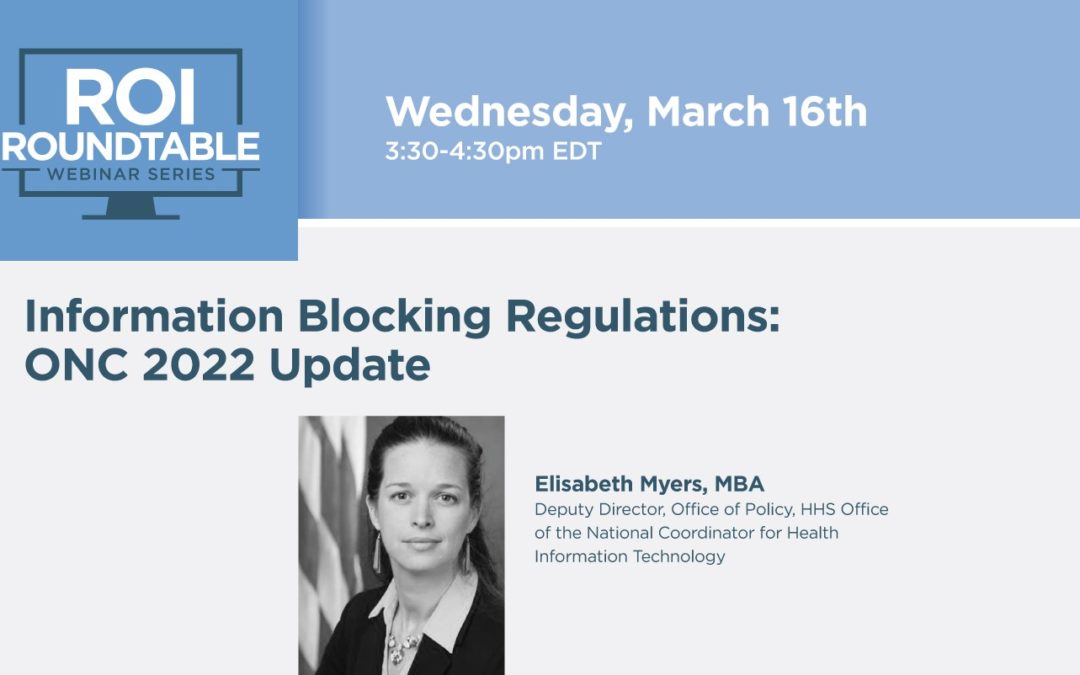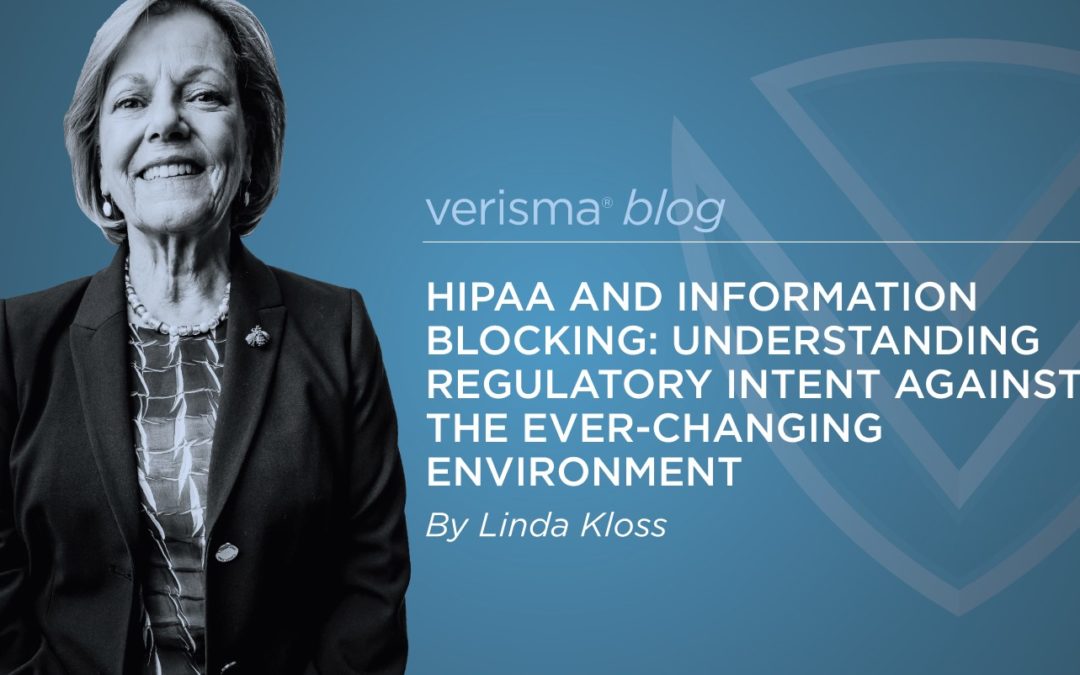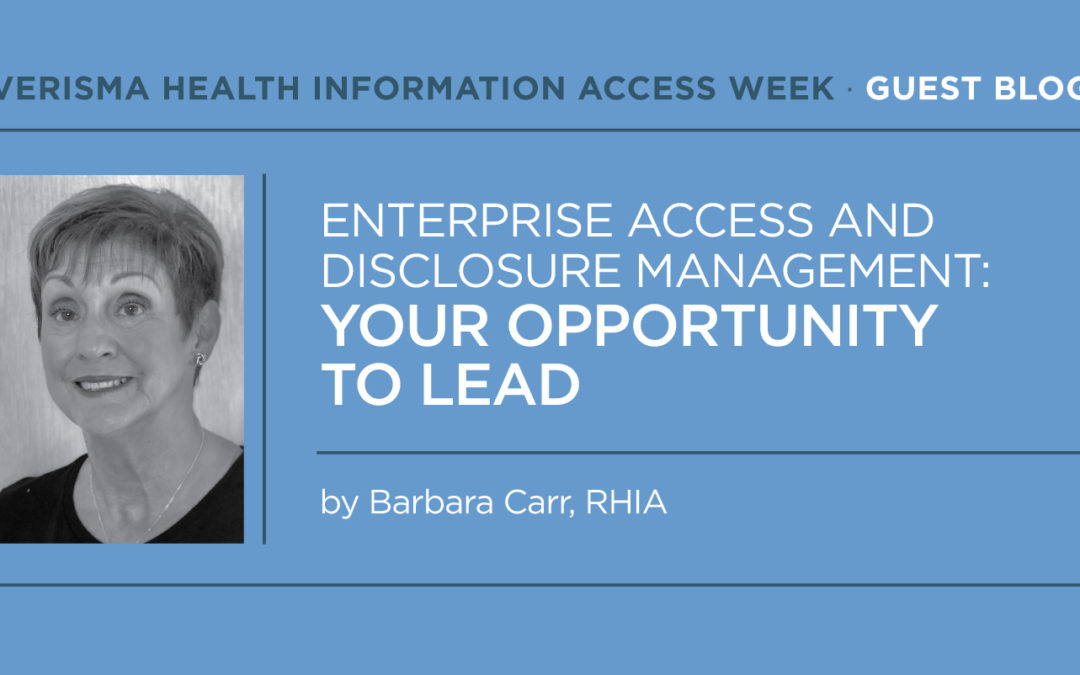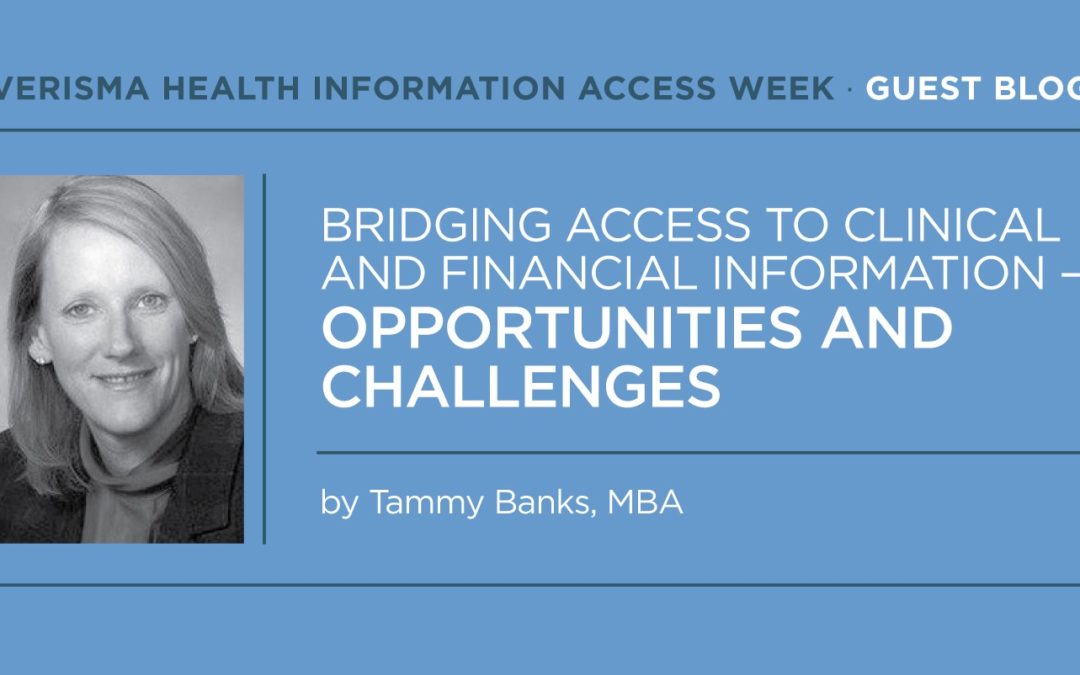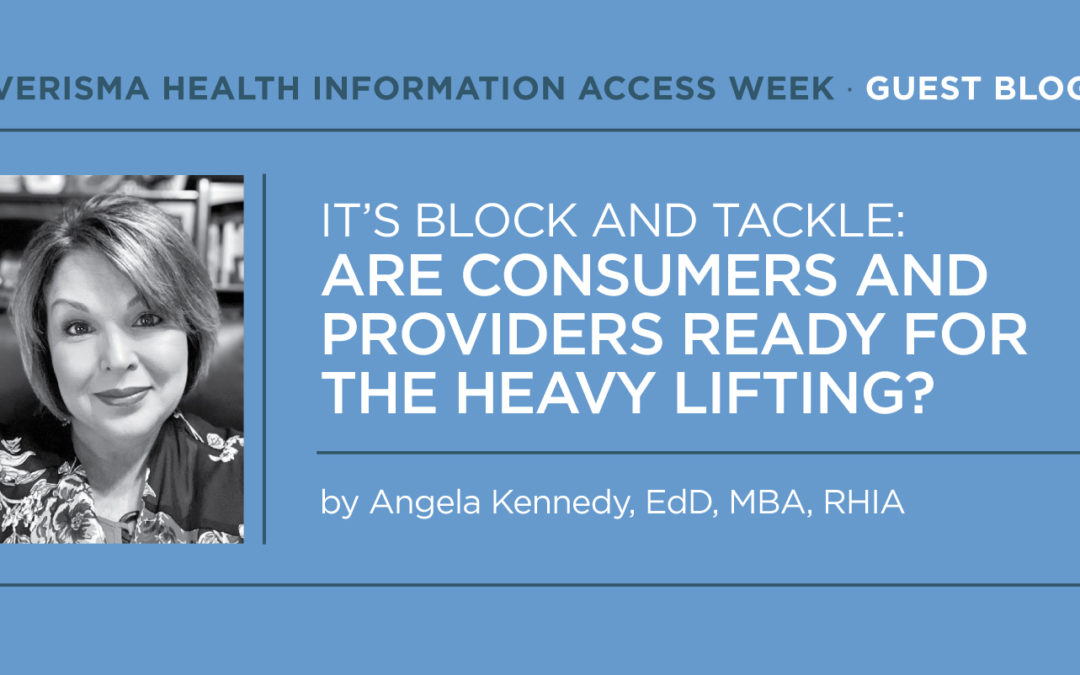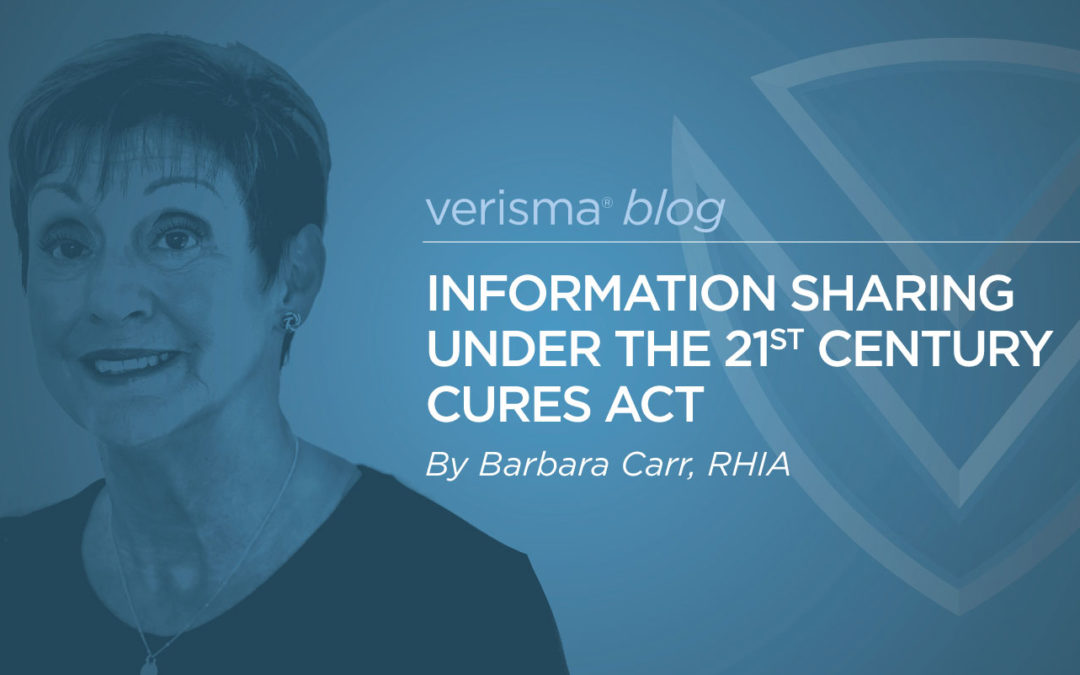
Information Sharing Under The 21st Century Cures Act
By Barbara Carr, RHIA
On March 16, 2022 Verisma hosted a webinar on Information Sharing and the 21st Century Cures Act presented by Elisabeth Myers, MBA, Deputy Director, Office of Policy, HHS Office of the National Coordinator (ONC). The ONC oversees regulations concerning information sharing and interoperability of electronic health information (EHI). Information sharing is at the heart of the 21st Century Cures Act’s information blocking rules.
The Information Blocking regulation went into effect on April 5, 2021. While we should all be fully compliant with the regulations by now, the fact is that in 2022, the regulation will expand the definition of EHI beyond the current United States Core Data for Interoperability Version 1 (July 2020 Errata) (USCDI v1) data set. As defined by the Information Blocking rule, the EHI definition is as follows:
- “Electronic Health Information (EHI) means electronic protected health information (ePHI) to the extent that the ePHI would be included in a designated record set as these terms are defined for HIPAA.
The expansion is “only” PHI that is in an electronic format. It does not include paper documentation even though that documentation may be scanned into the electronic record (PDFs). EHI is the discreet data that is used to make medical decisions. Noted in the webinar is that EHI is “electronic health information (ePHI) to the extent that it would be included in a designated record set”. Further explained during the webinar was that EHI “is individually identifiable health information, that is maintained in electronic media or transmitted by electronic media”. If the ePHI is included in any of the following records and not in the exclusions such as psychotherapy notes, then it would be considered EHI:
- Medical records and billing records of a provider about an individual
- Enrollment, payment, claim adjudication, and case or medical management record systems maintained by or for a health plan.
- Records used in whole or in part to make decisions about individuals
What is not EHI was explained as well. For example, such things like psychotherapy notes, information complied in anticipation of, or for use in, a civil, criminal or administrative action or proceeding, employment records health information, and de-identified protected health information.
Organizations should be looking at what they now include in their designated record set policy and revise if necessary, to ensure the that their policy includes the full scope of EHI in preparation for the October 6, 2022 expansion of the EHI definition beyond the current USCDI v.1 definition.
More details and explanation of the Information Blocking Regulation was shared with the attendees. Points that have caused some questions from health care providers and others in the health IT field were clarified. Information Blocking applies to “actors”. Actors are:
- Health Care Providers
- Health It Developers of Certified Health IT
- Health Information Networks (HINs)
- Health Information Exchanges (HIEs)
Exceptions to the Information Blocking Rule, which have caused a lot of questions from “actors”, in particular the “Infeasibility Exception” where it is not considered information blocking if it is infeasible for an actor to respond to a request. One example would be if it would be impossible for an actor to segment out psychotherapy notes from the EHI. Another would be the cost to comply would be prohibitive. Other examples were given as well as resource information available on ONC’s Cures Act Final Rule website, where attendees can find more information.
What should you do if you are experiencing information blocking? As directed by the Cures Act, the National Coordinator has implemented a standardized process for the public to submit reports on claims of information blocking. The report can be submitted through the Information Blocking Portal at: https://healthit.gov/report-info-blocking.
The second part of the presentation was focused on the Trusted Exchange Framework and Common Agreement (TEFCA). TEFCA as stated in the 21st Century Cures Act – Section 4003(b). While we do exchange EHI now, not all EHI exchanges enable exchange from another exchange. TEFCA was established to provide a technical floor for nationwide interoperability and to simplify connectivity for organizations to securely exchange information to improve care while enabling individuals to gather their health care information.
While TEFCA alone could be a webinar in and of itself, we did learn how it will be organized and were given detailed information to help us understand how TEFCA will operate. The Recognized Coordinating Entity (RCE) is the entity selected by ONC that will enter into agreements with Health Information Networks (HINs) that qualify and elect to become Qualified HINs. The RCE will act as a governing body that will operationalize TEFCA requirements on. The QHINs in turn will connect directly to each other to facilitate nationwide interoperability. Each of the QHINs will connect participants and sub participants to each other. Permitted exchange purposes are: Treatment, Payment, Health Care Operations, Public Health, Government Benefits Determination, and Individual Access Services.
The webinar provided a wealth of information and examined both interoperability and TEFCA clearly for participants to understand what to expect going forward with information sharing in 2022.

